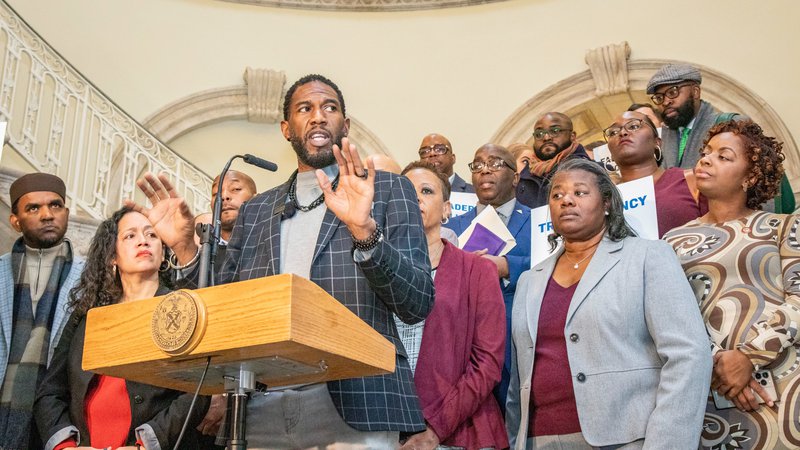UPDATE: On January 30, 2024, the New York City Council voted 42-9 to override the mayor's veto of the How Many Stops Act.
Last week, the mayor chose to veto the How Many Stops Act, our legislation to require basic reporting for police transparency. The bill passed the City Council in December with a veto-proof majority.
The administration has since engaged in a concerted misinformation campaign against this simple reporting legislation – in fact, the bill the administration is vocally opposing does not exist. The How Many Stops Act is critical to getting data about how policing strategies are being used on our streets, to ensure we’re all working with the same reliable information as we craft public safety policy. Right now, stops are being underreported, the federal monitor over the NYPD indicates as many as a quarter of current stops are unconstitutional, and 97% of New Yorkers stopped are Black and Brown. It’s vital that we prevent the kinds of abuses of stop, question, and frisk we’ve seen in the past, and that we build, not damage, trust in our communities.
To correct the misinformation and help New Yorkers understand the purpose and practice of this bill, we wanted to share some facts and dispel some myths about Intro 586-A, the How Many Stops Act:
What Intro 586-A Requires Officers to Report
- Without needing to ask and to the best of their ability: age, race and gender of Level I, II, III stops.
- Why they made the stop, how it began, and whether it escalated from one level to another.
- The final level of the stop.
- Whether there was force used during the stop.
Why Intro 586-A and This Information are Needed
- Transparency: Body-worn camera records show stops are being underreported and miscategorized, this bill fills that gap.
- Education: The monitor believes “Officers may also be genuinely confused about the lawfulness of their interactions.” Greater documentation will help clarify this confusion while also increasing accountability.
- Trust: If the NYPD can use the data found to better their policing practices it will go a long way to improving community relations and public safety.
- Discrimination: The federal monitor reviewed a recent random sampling and found 93% of stops made by Neighborhood Safety Teams were of young Black or Hispanic men, and a quarter were unconstitutional.
Dispelling the Administration's Misinformation
This reporting will not take more than 10-30 seconds.
- As we have repeatedly recommended to the NYPD, this reporting can be done instantaneously using a drop-down menu on a smartphone.
- The administration has shared the existing reporting structure for Level 3 Stops and falsely conflated it with what our bill requires.
- For large groups of interactions, the bill allows for a single entry to be completed.
- NYPD can create the form, if they want to put age range as options they can. It is however crucially important to understand what gender and race NYPD officers assumed those stopped to be.
This information and reporting requirement is not new.
- The NYPD Patrol Guide already requires level one and two stops tagged as part of body-worn camera usage. Our bill adds second ss to what the NYPD should already be doing.
- NYPD can create systems in a more efficient way than current reporting requirements – while being integrated into existing operations. If it becomes cumbersome, then they chose to slow down officers.
This is not paperwork preventing police work. This is police work.
- Recording interactions is already an important part of the investigative process.
- The absurd propaganda pushed by the administration relies on false representations of reporting, such as physical paperwork.
This data reported is logical, anonymous, and based on existing standards.
- Information such as name and address are not required or wanted.
- In drafting this legislation, the NYPD actually requested we add one of the categories to the reporting.
- The standards of ‘perceived’ demographic information are already used in the NYPD patrol guide for reporting.
This reporting does not apply to casual interactions with New Yorkers
- The text of the bill reads: “...‘Investigative encounter” means an interaction between a member of the department and a member of the public for a law enforcement or investigative purpose. The term does not include a casual conversation or interaction between a member of the department and a member of the public…”
This legislation is key to advancing public safety for New Yorkers, and we hope that when the City Council overrides this veto, we can work with the administration to ensure that transparency is a point of collaboration, not contention.
